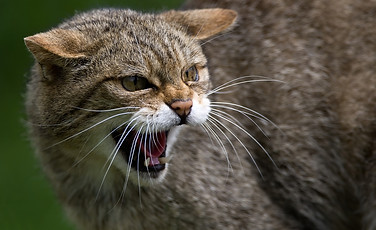
HED LTD
Protected Species:
SCOTTISH WILDCAT
Legal Protection
The Scottish wildcat is a European protected species and is given protection under the Conservation (Natural Habitats, &c.) Regulations 1994 (as amended). The places that wildcats use are also protected.
It is an offence to deliberately or recklessly:
-
capture, injure, kill or harass a wildcat
-
disturb a wildcat in a den or any other structure or place it uses for shelter or protection
-
disturb a wildcat while it is rearing or otherwise caring for its young
-
obstruct access to a den or other structure or place wildcats use for shelter or protection or otherwise deny the animal use of that place
-
disturb a wildcat in a manner or in circumstances likely to significantly affect the local distribution or abundance of the species
-
disturb a wildcat in a manner or in circumstances likely to impair its ability to survive, breed or reproduce, or rear or otherwise care for its young

It is also an offence to:
-
damage or destroy a breeding site or resting place of such an animal (whether or not deliberately or recklessly)
-
keep, transport, sell or exchange, or offer for sale or exchange any wildcat (or any part or derivative of one) obtained after 10 June 1994
Survey Timings
Camera surveys for wildcat can be carried out all year round but for detection of field signs surveys are best undertaken when vegetation is low.
Licensable Issues
A licence may be required to examine wildcat dens, use cameras near dens, or conduct research that might disturb wildcats. Development works or land management practices that might affect wildcats where such impacts are unavoidable.
The legal possession of wildcat specimens for scientific, research or educational purposes will also require a licence. The capture, possession or release of a wildcat outside its native range also requires a licence.